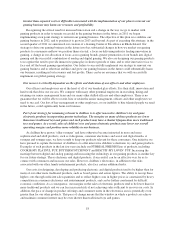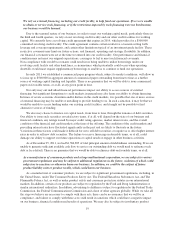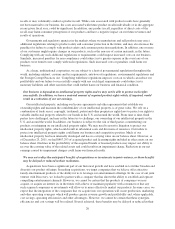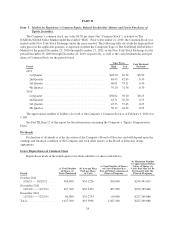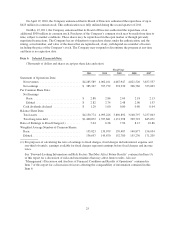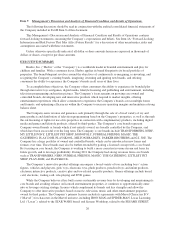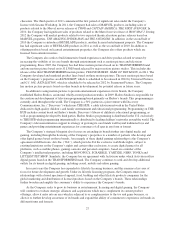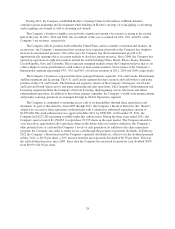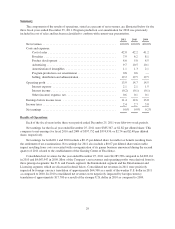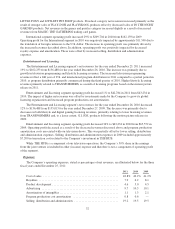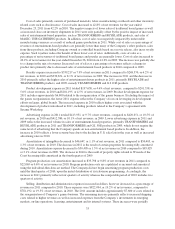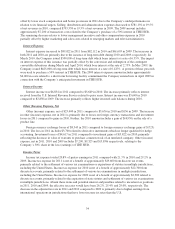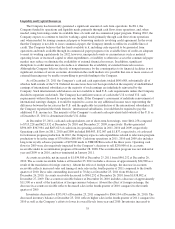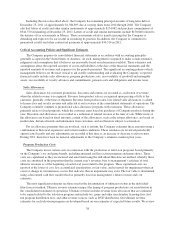Hasbro 2011 Annual Report Download - page 37
Download and view the complete annual report
Please find page 37 of the 2011 Hasbro annual report below. You can navigate through the pages in the report by either clicking on the pages listed below, or by using the keyword search tool below to find specific information within the annual report.During 2011, the Company established Hasbro’s Gaming Center for Excellence in Rhode Island to
centralize games marketing and development while building on Hasbro’s strategy of re-imagining, re-inventing
and re-igniting core brands as well as inventing new brands.
The Company’s business is highly seasonal with a significant amount of revenues occurring in the second
half of the year. In 2011, 2010 and 2009, the second half of the year accounted for 63%, 65% and 65% of the
Company’s net revenues, respectively.
The Company sells its products both within the United States and in a number of international markets. In
recent years, the Company’s international net revenues have experienced growth as the Company has sought to
increase its international presence. One of the ways the Company has driven international growth is by
opportunistically opening offices in certain markets to develop a greater presence. Since 2006, the Company has
opened up operations in eight new markets around the world including China, Brazil, Russia, Korea, Romania,
Czech Republic, Peru and Colombia. These represent emerging markets where the Company believes that it can
achieve higher revenue growth than it could achieve in more mature markets. Net revenues of the Company’s
International segment represented 43%, 39% and 36% of total net revenues in 2011, 2010 and 2009, respectively.
The Company’s business is separated into three principal business segments, U.S. and Canada, International
and Entertainment and Licensing. The U.S. and Canada segment develops, markets and sells both toy and game
products in the U.S. and Canada. The International segment consists of the Company’s European, Asia Pacific
and Latin and South American toy and game marketing and sales operations. The Company’s Entertainment and
Licensing segment includes the Company’s lifestyle licensing, digital gaming, movie, television and online
entertainment operations. In addition to these three primary segments, the Company’s world-wide manufacturing
and product sourcing operations are managed through its Global Operations segment.
The Company is committed to returning excess cash to its shareholders through share repurchases and
dividends. As part of this initiative, from 2005 through 2011, the Company’s Board of Directors (the “Board”)
adopted six successive share repurchase authorizations with a cumulative authorized repurchase amount of
$2,825,000. The sixth authorization was approved in May 2011 for $500,000. At December 25, 2011, the
Company had $227,269 remaining available under this authorization. During the three years ended 2011, the
Company spent a total of $1,150,683, to repurchase 29,395 shares in the open market. The Company intends to,
at its discretion, opportunistically repurchase shares in the future subject to market conditions, the Company’s
other potential uses of cash and the Company’s levels of cash generation. In addition to the share repurchase
program, the Company also seeks to return excess cash through the payment of quarterly dividends. In February
2012 the Company’s Board increased the Company’s quarterly dividend rate, effective for the dividend payment
in May 2012, to $0.36 per share, a 20% increase from the prior quarterly dividend of $0.30 per share. This was
the sixth dividend increase since 2005. Since then the Company has increased its quarterly cash dividend 300%,
from $0.09 to $0.36 per share.
28


